Angular Contact Thrust Ball Bearings
Table of Contents
Categories
-
Adapter Sleeves (9)
-
Ball Bearings (11)
-
Ball Screw Bearings (2)
-
Ceramic Bearings (27)
-
Pillow Block Bearings (4)
-
Plain Bearings (32)
-
Roller Bearings (12)
-
Slewing Bearings (43)
-
Sliding Block (3)
-
Stainless Steel Bearings (27)
-
Super Precision Bearings (6)
-
Thin Section Bearings (9)
-
Track Rollers (4)
-
Universal Joints (1)
Definition of Angular Contact Thrust Ball Bearings
Angular contact thrust ball bearings are designed to to carry axial loads with small radial load carrying capacity. They comprise of a shaft washer, a housing washer, and a ball and cage assembly. These bearings have raceways on the face the washers and are separable.
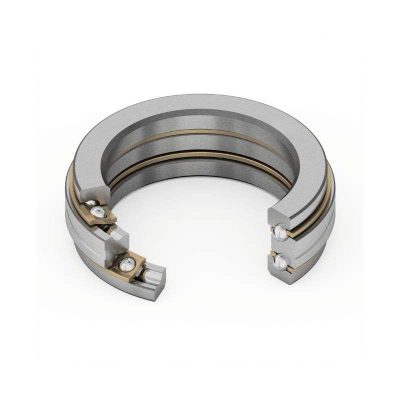
FHD Bearings is an ISO 9001:2015 certified manufacturing enterprise .Our company has a wide range of products in stock covering a wide range of areas to ensure that we are able to meet the diverse needs of our customers. We offer a wide selection of both models and specifications to ensure that our customers are able to quickly obtain the products they need and meet their specific engineering and business requirements.
Materials of Angular Contact Thrust Ball Bearings
The primary factors for selecting chrome steel material in angular contact thrust ball bearings are its excellent hardness, wear resistance, high load-bearing capacity, and cost-effectiveness in manufacturing.
Stainless Steel
Stainless steel material in angular contact thrust ball bearings is driven by its corrosion resistance, making it ideal for applications exposed to moisture or harsh environments.
The primary factor for selecting ceramic material in angular contact thrust ball bearings is its combination of high stiffness, low thermal expansion, and corrosion resistance, providing enhanced performance in specific applications.

Nylon
Selecting nylon material in angular contact thrust ball bearings is driven by its low friction, lightweight properties, and corrosion resistance, making it an optimal choice for cage construction in various applications.
Features of Angular Contact Thrust Ball Bearings
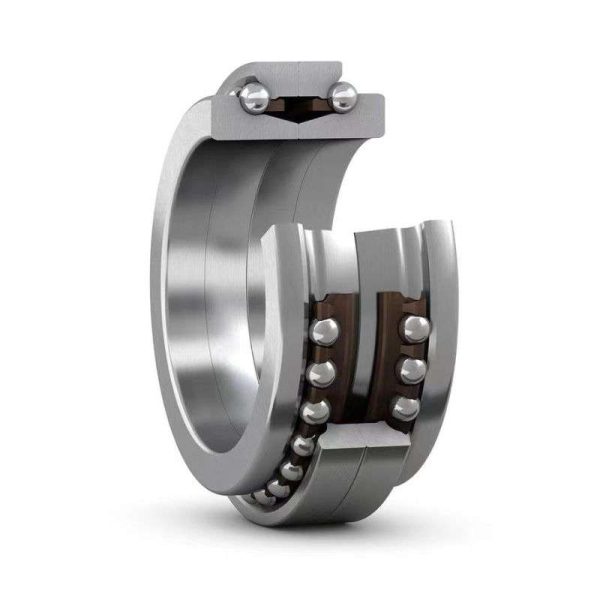
1.Axial Load Carrying Capability: Specifically designed to carry axial loads, it can effectively support unidirectional or bidirectional thrust loads.
2.Rigidity and Accuracy: Highly rigid to provide stability and accuracy at high speeds and high loads.
3.Preloading: Performance can be optimized through preloading to ensure that bearing rigidity and accuracy are maintained during operation.
4.Versatility: Suitable for a wide range of industrial applications, including mechanical engineering, aerospace and automotive.
5.High-speed operation: The design and bearing material selection make it suitable for high-speed rotating environments.
6.Combinations: Can be used as individual bearings or in pairs to meet the specific needs of different applications.
7.Wear and Corrosion Resistance: Wear and corrosion resistant materials such as chrome or stainless steel are used to enhance bearing life and reliability.
8.Lightweight Designs: Some designs utilize lightweight materials, such as ceramics or high-strength plastics, to reduce the overall weight of the bearing.
Advantages of Angular Contact Thrust Ball Bearings
1.High axial load carrying capacity: Specialized design for efficiently carrying axial loads, capable of effectively supporting unidirectional or bidirectional thrust loads.
2.High Rigidity and Accuracy: Superior rigidity provides excellent stability and accuracy at high speeds and under high load conditions.
3.Suitable for High-Speed Operation: The structural design and bearing material selection make it suitable for high-speed rotating environments, maintaining stability and reliability.
4.Versatility: Suitable for a wide range of industrial applications, including mechanical engineering, aerospace, automotive and other fields, with a wide range of applications.
5.Adjustability: Performance can be optimized through preloading, ensuring that bearing rigidity and precision are maintained during operation.
6.Long life: Wear- and corrosion-resistant materials, such as chrome or stainless steel, are used to increase bearing life and reliability.
7.Lightweight Design Options: Lightweight materials, such as ceramics or high-strength plastics, are used in some designs to reduce overall bearing weight.
8.Flexible Configurations: Can be used as individual bearings or in pairs to meet specific needs in different applications, increasing system flexibility.

Applications of Angular Contact Thrust Ball Bearings

- Machine tools and CNC machine tools: Angular contact thrust ball bearings are widely used in machine tool spindle systems to withstand high speed rotation and bi-directional axial loads.
- Automotive driveline: In automotive transmissions and differentials, angular contact thrust ball bearings are used to withstand axial loads from engine output.
- Aerospace: Due to the lightweight design and high load carrying capacity, angular contact thrust ball bearings are often used in the aerospace field for aircraft engines, landing gear and flight control systems.
- Wind power: Angular contact thrust ball bearings effectively support bi-directional axial loads from rotating blades in the main shaft and drive train of wind turbines.
- Electric motors and power tools: Angular contact thrust ball bearings are used in electric motors and power tools to support high-speed rotation and bear axial loads.
- Heavy machinery: In heavy equipment such as cranes, excavators and construction machinery, angular contact thrust ball bearings provide reliable axial support.
- Bearing support: In a variety of industrial equipment, such as roller and roller support systems, angular contact thrust ball bearings can stably support bi-directional axial loads.
- Medical equipment: Due to their high precision and low noise characteristics, angular contact thrust ball bearings are widely used in medical imaging equipment and surgical equipment.
Key Manufacturing Process of Angular Contact Thrust Ball Bearings
Selection of raw materials: Selection of high quality bearing steel or other special alloys suitable for bearing manufacture. This ensures that the bearings have sufficient hardness, strength and wear resistance.
Forging: The selected raw materials are forged, and the metal billet is formed into a preliminary shape through heating and hammering processes to provide the basis for subsequent processing.
Heat treatment: Heat treatment of the rough turned parts, usually including quenching and tempering, to improve the hardness, strength and wear resistance of the bearings.
Precision Grinding: Using grinding machines to precision grind the outer diameter, inner diameter and raceways of the bearings to ensure their dimensional accuracy and surface quality.
Assembling: assembling the ground parts into bearing units, including rolling bodies, cages and outer rings.
Lubrication: Add appropriate grease or oil inside the bearing to minimize friction, cool the bearing and provide good lubrication conditions.
Quality inspection: Conduct strict quality inspection, including size measurement, running test, noise test, etc., to ensure that the bearings meet the design requirements.
Packing and Factory: Pack the qualified bearings, ready to be shipped to customers or finally assembled into the equipment.

FAQ - Frequently Asked Questions
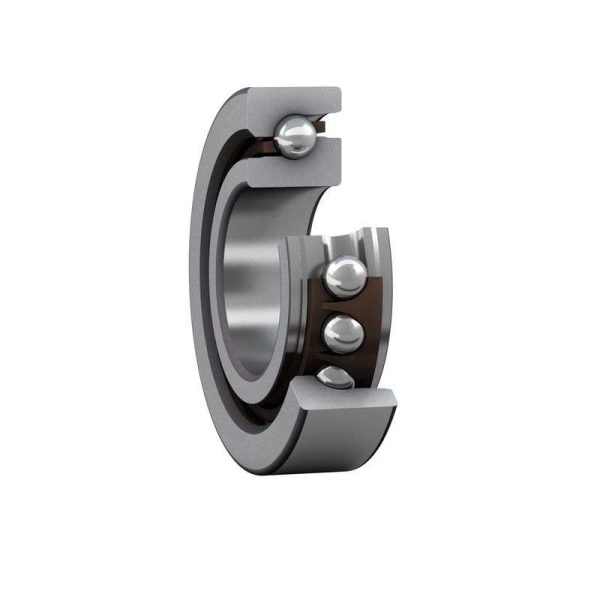
An angular contact thrust ball bearing is a bearing designed to carry axial loads in both directions, and its design enables it to carry loads both horizontally and vertically.
Angular contact thrust ball bearings offer high load carrying capacity, rigidity and accuracy compared to other bearing types and are particularly suitable for high speed rotation and high load applications.
Angular contact thrust ball bearings are commonly used in a variety of industries such as machine tool manufacturing, automotive driveline, aerospace, wind power generation, electric motors and power tools, and medical equipment.
The bearing is able to withstand both radial and axial loads through the angle of contact between the balls and the inner and outer rings, realizing effective support of loads in both directions.
Bearing life is affected by a number of factors, including load, speed, lubrication and operating conditions. Under normal use, the life of reasonably maintained bearings can reach hundreds of thousands to millions of rotation cycles.
When mounting, it is necessary to ensure that the shaft bearing force is uniform, avoid excessive preload. Regularly check the lubrication condition to ensure adequate lubrication to extend bearing life.
Due to their low friction and low inertia design, angular contact thrust ball bearings are suitable for high speed rotation while providing stable performance.
These bearings are adapted to the high loads and bi-directional axial loads in automotive drivelines and provide reliable support for components such as transmissions and differentials.
The bearings are usually equipped with seals or dust caps to prevent dust and contaminants from entering the interior of the bearings and to increase the service life of the bearings.
When selecting a bearing, factors such as load, speed, operating environment, and size need to be taken into account to ensure that the bearing selected will meet the requirements of the particular application.
Installation and Maintenance of Angular Contact Thrust Ball Bearings
Installation
- Bearing Preparation: Before mounting, make sure that the bearing itself is not damaged and check whether the parts are complete.
- Bearing Alignment: Position the bearing accurately on the shaft and ensure that the locating rings or holes in the bearing are properly aligned.
- Lubrication: Ensure that grease or oil is properly applied to the inside and outside of the bearing before it is mounted.
- Fixing: Using the correct tools, tighten the nuts and ensure that the bearing is securely fixed according to the bearing type and design specification.
- Install Seals (if applicable): Install bearing seals to prevent dirt and contaminants from entering the bearing.
- Final Check: Perform a final check to ensure that all components are properly installed and that the bearing is free to rotate without abnormality.
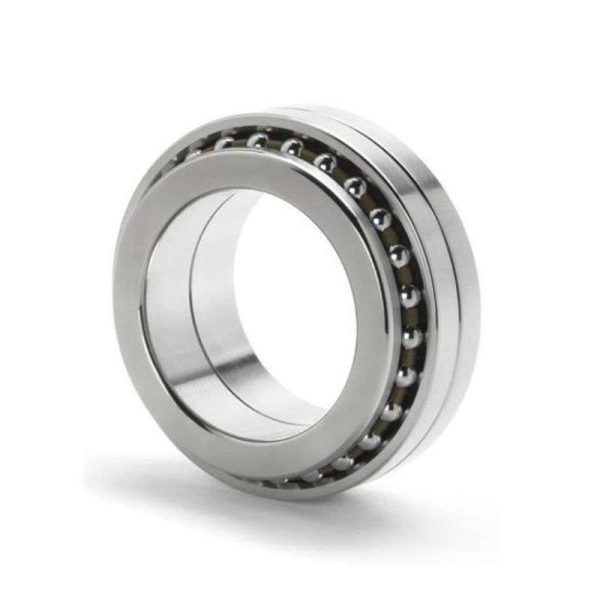
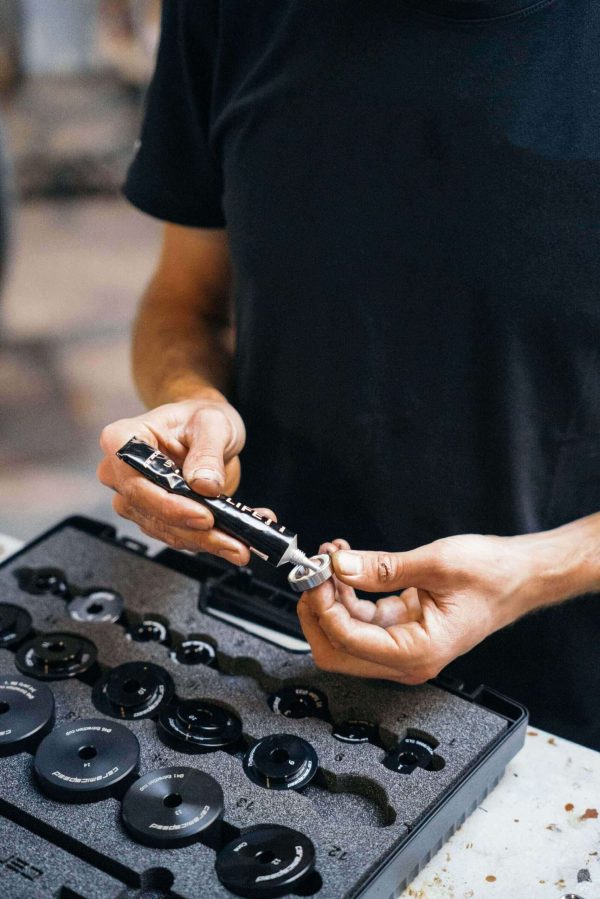
Maintenance
- Regular Lubrication: check the lubrication status of the bearings regularly, add appropriate amount of grease or oil according to the working conditions and requirements.
- Clean Environment: keep the working environment of the bearings clean, avoid dust and pollutants into the bearings, affecting the normal operation.
- Vibration Monitoring: Use vibration monitoring equipment to carry out regular inspections, in order to detect abnormal vibration of bearings in time to prevent damage.
- Temperature Monitoring: Regularly check the temperature of the bearings. Abnormal temperature rise may be an early indication of bearing failure.
- Preload Check: If the bearing has an adjustable preload, check it periodically and adjust as necessary.
- Seal Checks: Regularly check bearing seals to ensure good sealing performance and to prevent grease leakage and contamination.
- Periodic Cleaning: For bearings exposed to harsh environments, clean the surfaces periodically to prevent dirt buildup from negatively affecting the bearings.
- Regularly Check bearing clearance: For some bearings that require specific clearance, regularly check and adjust the bearing clearance.
















